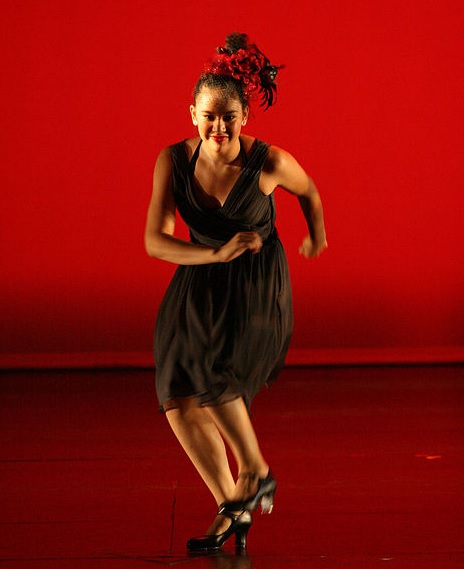Module 4: Tap and Jazz
Section outline
-

Image Attribution CC-SA-4.0 Jim Lamberson Feburary 7 2015
The development of jazz and tap dance forms resulted from West African dance forms that were eventually blended with other cultures, beginning with the transatlantic slave trade in the mid-late 16th century. While slaves were transported to what we now know as the United States, the ship’s captains wanted to keep their cargo healthy. The enslaved people were brought on top of the ship to actively perform what was called “dancing the slaves.” They stayed shackled; however, they came up with creative ways to exercise and mimicked the percussive sounds derived from drums that were an integral part of their culture. The Africans used their bodies to maintain some of these sounds and rhythms, such as hambone. From African, Spanish, Irish, and other cultural dance roots, tap and jazz dance forms were unstructured, and over time, became structured forms of dance that have blended and evolved over the years. The American inventions of tap and jazz were built from African drumming rhythms mixed with other forms of dance cultures and rhythms. It is important to note that Jazz Dance, Tap Dance and jazz music are the only forms of dance and music created in the United States by our enslaved African ancestors. As the country changed, adding immigrants from Europe, the Middle East, the Caribbean, South America and Africa, social dances absorbed all these flavors and produced exciting new forms. Minstrel shows of the early 1800s were replaced by Vaudeville shows after the Civil War. Post World War I, ragtime music was disappearing into jazz.
Upon completion of this module, you will be able to:- Identify key techniques and prominent figures in tap and jazz dance genres.
- Understand the history of tap and jazz dance and summarize major events in the course of its development.
- Demonstrate a culturally informed dance aesthetic.
To achieve these objectives:
- Read the Module 4 Introduction
- Read and view the materials in Ch. 5 So You Think You Know Dance
- Complete the assignments.
Module Pressbooks Resources and Activities
You will find the following resources and activities in this module at the Pressbooks website. Click on the links below to access or complete each item.
Background Colour
Font Face
Font Kerning
Font Size
Image Visibility
Letter Spacing
Line Height
Link Highlight
Text Colour
